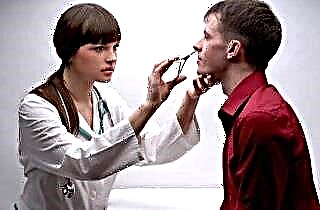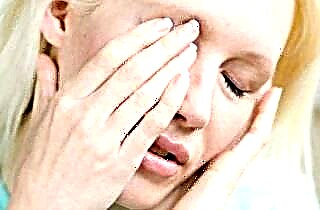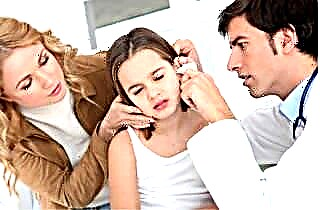Partial sinusitis develops when acute sinusitis has not been treated or treated incorrectly. Gradually, the mucous membranes thicken, the walls of the sinuses swell, and the disease becomes chronic.
Characteristics of the disease
 Its distinctive feature is that inflammation covers not only the upper, epithelial layer of the sinus, but also the lower, submucosal. Often, the disease also affects the bony parts of the sinuses. Initially, edema occurs on the nasal mucosa, gradually expands, covering the paranasal sinuses, the mucous membrane of which also becomes denser. Usually the disease spreads to one side of the face, but there is also bilateral inflammation. It is caused by infection or an allergic reaction. At the initial stage, it is difficult to determine sinusitis, since its symptoms are similar to the usual ARVI or ARI. But it is the untimely or incorrect therapy of the initial stage of the disease that leads to the development of parietal sinusitis.
Its distinctive feature is that inflammation covers not only the upper, epithelial layer of the sinus, but also the lower, submucosal. Often, the disease also affects the bony parts of the sinuses. Initially, edema occurs on the nasal mucosa, gradually expands, covering the paranasal sinuses, the mucous membrane of which also becomes denser. Usually the disease spreads to one side of the face, but there is also bilateral inflammation. It is caused by infection or an allergic reaction. At the initial stage, it is difficult to determine sinusitis, since its symptoms are similar to the usual ARVI or ARI. But it is the untimely or incorrect therapy of the initial stage of the disease that leads to the development of parietal sinusitis.
A distinctive feature of this type of sinusitis is the absence of pus in the sinuses. The separated mucus does not enter the outside, but into the nasopharynx, flowing down the back wall. From the nose, the discharge is extremely scarce, not reminiscent of sinusitis.
Therefore, patients often simply do not see the point in going to a doctor and carry out treatment on their own. Almost always, it is inadequate, and therefore leads to the development of complications.
Causes of occurrence
As already mentioned, the disease is mainly provoked by an infection. Most often, the causative agents are staphylococci, mycoplasmas, chlamydia, streptococci, haemophilus influenzae, fungi.
Another group of reasons - pathologies that were treated incorrectly. Sinusitis also develops due to:
 curvature of the nasal septum;
curvature of the nasal septum;- inflammation in the roots of the teeth, which are located near the sinuses;
- narrowness of the nasal passages;
- scarlet fever, measles;
- colds that have not been healed (especially in children);
- chronic pharyngitis or tonsillitis;
- allergic rhinitis;
- high pressure drop in the environment when diving or frequent airplane flights.
The above diseases, like sinusitis itself, can appear against the background of a decrease in immunity, usually in the off-season. Then a weakened body that lacks vitamins is often unable to cope even with a common cold. Therefore, it must be supported on time.
Symptoms
The main signs of sinusitis of this form are:
- sleep disturbance;
 shrunken voice;
shrunken voice;- pain behind the eyeballs;
- shortness of breath, especially nasal;
- irregular or regular temperature rise;
- pain in the bridge of the nose and nose;
- migraines, general fatigue;
- bloody streaks are observed in the separated mucus;
- the secret leaves the nose with difficulty.
Sometimes blues, loss of working capacity, lethargy and irritability are attributed to some other factors and are not at all associated with possible sinusitis. However, when the disease is triggered, headaches, conjunctivitis, persistent runny nose, and coughing often occur.
In severe sinusitis, the sinuses become clogged with secretions and pus, the infection in them penetrates the brain and causes meningitis.
Stages of development of the disease
Of course, complications of sinusitis do not appear immediately. Parietal sinusitis forms gradually until it becomes threatening. In general, its course depends on the state of immunity, the type of pathogen. The following stages of the development of the disease are distinguished:
- Initial (subacute). It is difficult to determine it, since the external manifestations completely repeat the symptoms of a cold or ARVI.
- Sharp. Pains begin to bother in various areas of the head, but more often in the forehead and nose, the general state of health worsens.
- Chronic. Appears due to untimely or incorrect treatment. At this stage, periods of exacerbation of the disease and its remission alternate.
Therapy
Treatment of parietal sinusitis is aimed at relieving sinus edema, improving natural drainage and air exchange in them. The advantage of the disease is that no surgical intervention is required; it can be completely cured with conservative methods.
First, the patient is prescribed vasoconstrictor nasal drops. They help relieve puffiness and reduce mucus production. The most popular remedies are Xilen, Nazivin, Vibrocil, Sanorin. However, it must be remembered that such medications should not be taken longer than the time prescribed by the doctor. It should be indicated in the instructions for the drug, but for such drops, the course of treatment is usually no more than five days.
In parallel with the use of vasoconstrictors, the nasal passages must be sanitized with saline solutions. You can prepare them yourself or purchase preparations of a similar action based on sea water.
If the runny nose is allergic, antihistamines are prescribed. They eliminate rhinorrhea, relieve swelling. These funds are selected and prescribed only by a doctor. This group of drugs should include "Claritin", "Tavegil", "Cetrin". At the same time, sessions of ultrasound, laser therapy or other physiotherapy procedures are recommended.
What not to do
 There are some caveats when treating this condition. It is very important to properly rinse and blow out the nose. It is impossible to perform washing with severe swelling of the mucous membrane during the acute stage of ARVI. There is a danger of driving the solution along with the infection into the middle ear and provoking otitis media. Therefore, before the procedure, you need to take vasoconstrictor drops so that the nose breathes at least a little. You should blow your nose by closing one nostril and blowing out all the contents well from the other.
There are some caveats when treating this condition. It is very important to properly rinse and blow out the nose. It is impossible to perform washing with severe swelling of the mucous membrane during the acute stage of ARVI. There is a danger of driving the solution along with the infection into the middle ear and provoking otitis media. Therefore, before the procedure, you need to take vasoconstrictor drops so that the nose breathes at least a little. You should blow your nose by closing one nostril and blowing out all the contents well from the other.
It is not recommended to warm up the sinuses on your own without a doctor's recommendation. Typically, heat causes more swelling, making breathing difficult and pain worse. Using traditional methods, refrain from aggressive substances (poisonous plants, urine, etc.), as well as those to which you may be allergic. This will lead to a complication of the disease. Without consulting a doctor, you should not use folk remedies inside.
The myth is the treatment of sinusitis by fasting. You can adjust your diet by removing allergenic foods, heavy and fatty foods from the menu. But fasting leads to a decrease in immunity, against the background of which the disease will develop even more.
Preventing ailment
 It is not difficult to guess that the most effective means of preventing sinusitis will be to maintain a high level of immunity. To do this, you need to lead an active lifestyle, exercise daily, and from the summer start to temper the body.
It is not difficult to guess that the most effective means of preventing sinusitis will be to maintain a high level of immunity. To do this, you need to lead an active lifestyle, exercise daily, and from the summer start to temper the body.
Helps to strengthen the immune system, proper nutrition, enriched with vitamin products, minerals. If the need arises, you can take immunomodulators, but do not get too carried away with them.
Always dress appropriately for the weather to stay cool. During periods of epidemics, try to avoid crowded places so as not to catch an infection.
Also, get rid of the foci of inflammation in the body as quickly as possible. First of all, this applies to adenoids and diseased teeth. Doctors advise to rinse the nose with saline or salt water twice a day (in the evening and in the morning), especially during periods of changing seasons, when pathogenic microbes are actively multiplying. This will prevent them from settling on the lining of the nose or throat, which usually causes inflammation and subsequent disease.

 curvature of the nasal septum;
curvature of the nasal septum; shrunken voice;
shrunken voice;

